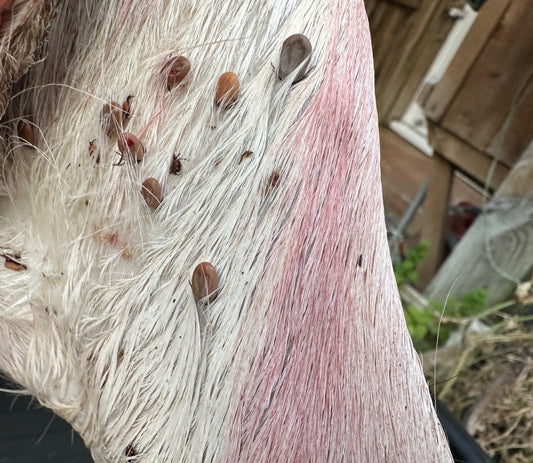A silent yet significant challenge confronts the agricultural sector: the impact of deer on crops in Sussex. With an annual loss estimated at £4.5 million due to deer-related crop damage, this issue transcends mere agricultural concern, rippling into the broader spheres of economy and food security. Here we look into the magnitude of this problem and explores effective strategies to mitigate these losses, ensuring the sustainability of agriculture and the protection of farmers' livelihoods.
The Extent of Economic Impact:
Deer, with their natural browsing habits, often find cultivated fields an irresistible source of food. This predilection leads to significant crop damage, affecting a wide range of agricultural produce from cereals and vegetables to specialty crops. The economic toll is not just a matter of lost produce; it encompasses the additional costs of prevention, control measures, and the time and resources spent in managing the deer population.
Deer damage to cereal crops in Sussex, a region known for its varied landscapes and productive farmland, can manifest in several ways, impacting both the yield and quality of the crops. Some specific examples of how deer affect cereal crops in this area include:
Physical Damage to Plants: Deer, particularly species like Fallow, Roe, and Muntjac, which are common in Sussex, can cause direct physical damage to cereal crops such as wheat, barley, and oats. They often eat or trample young shoots, leading to stunted growth or complete destruction of the plants. This damage is especially prevalent during the early growing stages when the shoots are tender and most appealing to deer.
Patchy Crop Growth: Areas of a field where deer have been feeding frequently exhibit patchy growth. The unevenness is not just aesthetically unpleasing but can complicate harvesting and reduce overall yield. The patchiness also indicates a potential for uneven ripening, affecting the quality and timing of the harvest.
Creation of Trails and Paths: Deer movement through cereal fields can create trails and paths, which may not only damage the crops but also facilitate the movement of other wildlife that could cause further harm. These paths can also become channels for water runoff, potentially leading to soil erosion.
Spread of Diseases and Pests: Deer can be carriers of diseases and pests which can be transferred to cereal crops. Their movement through different fields can facilitate the spread of these harmful agents, potentially affecting a wider area than just the field they are feeding in.
Secondary Effects on Soil and Plant Health: The trampling by deer affects soil compaction, which can influence the root development and water uptake of cereal plants, indirectly affecting their health and productivity.
Financial Implications for Farmers: Beyond the direct damage to crops, Sussex farmers may incur additional costs in terms of increased surveillance, installation of deterrents or fencing, and potential loss of premium quality designation for their produce due to damage.
These examples highlight the importance of effective deer management in agricultural regions like Sussex. Addressing deer-related crop damage is crucial for maintaining the health and productivity of cereal crops and the economic viability of farming in these areas.
Furthermore, the issue extends beyond the boundaries of individual farms, impacting the entire food supply chain. Price fluctuations, supply shortages, and increased reliance on imports can be some of the broader economic consequences.
Effective Management Strategies:
Deer-Proof Fencing and Barriers: Erecting physical barriers remains one of the most effective ways to protect crops from deer. Fencing, particularly when tailored to the specific type of deer prevalent in the area, can significantly reduce instances of crop raiding. This includes considering the height and sturdiness of the fences to counteract the agility and strength of deer.
Using Deterrents and Repellents: A variety of deterrents can be employed to discourage deer from entering crop fields. These range from chemical repellents, which make crops unpalatable, to ultrasonic devices or scare tactics that create an uncomfortable environment for deer.
Habitat Modification: Altering the surrounding habitat can reduce the attractiveness of the area to deer. This includes clearing brush or planting non-palatable vegetation around the periphery of fields.
Controlled and Ethical Culling: Where legal and ethical, controlled culling can be an effective method of managing deer populations, especially in areas with high densities. This strategy requires careful planning and implementation to ensure it aligns with wildlife management and conservation goals.
The economic impact of deer on the agricultural sector is a multifaceted challenge that requires a balanced and informed approach. By implementing strategic and sustainable management practices, it's possible to mitigate the effects of deer-related crop damage. This not only protects the livelihoods of farmers but also contributes to the stability of the UK's food supply chain. For more information and expert guidance on effective deer management and crop protection strategies, visit Wildscape Deer Management.




